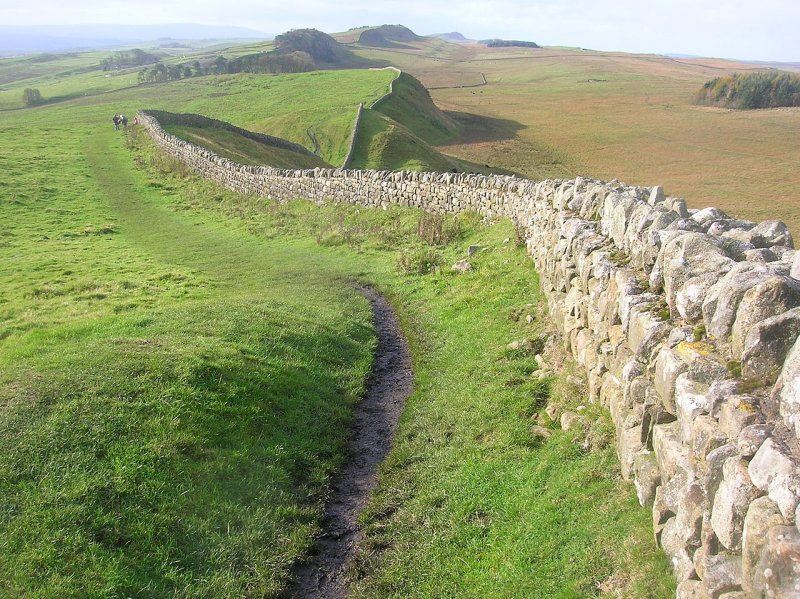Hadrian’s Wall: North-West Frontier Of The Roman Empire For Nearly 300 Years
A. Sutherland - AncientPages.com - The Romans were skilled builders, and throughout their vast empire, we find their impressive, massive, and long-lasting structures.
A view of Hadrian's Wall showing its length and height. The upright stones on top of it are modern, to deter people from walking on it. Image credit: quisnovus - CC BY 2.0
"The most impressive Roman remains in Britain today are military. Foremost amongst them are the fortifications of Hadrian's Wall, which hints at Britain's place within the Roman Empire.
It was not a sleepy, urbanized province like Greece, Italy, or North Africa. Britain sat on the edge of the empire, somewhat precariously, since half of the island lay within the sphere of "Barbaricum."
Warfare, or the threat of it, was a fact of life.: three of Rome's thirty legions sat here waiting to test their mettle against the hostile tribes of the north." 1
Famous Hadrian's Wall, also known as Picts' Wall, Vallum Hadriani (in Latin), or simply the Roman Wall, was built on the northernmost fringe of the empire. The emperor Hadrian visited Britannia in AD 122 and ordered his generals to build a wall from the banks of the River Tyne near the North Sea to the Solway Firth on the Irish Sea.
Hadrian's Wall facing east towards Crag Lough. The rocky outcrop is the Whin Sill, of volcanic origin. Image credit: Michael Hanselmann - CC BY-SA 3.0
The construction would prevent raiders from the north from destroying the strategic Roman base at Corbridge in Northumberland.
The 800 soldiers lived and worked at Housesteads in Roman times. The fort's original name was 'Vercovicium,' meaning 'the place of the effective fighters.'
Hadrian's famous construction consists not just of the Wall itself but many structures such as forts, bridges, towers, temples, civil settlements, mile castles (small guard posts) with two turrets built at each mile, and many other constructions.
The structure was 80 Roman miles (about 73 modern miles or 117 km) long. It was built in 5-mile stretches, with seventeen forts. Smaller forts were built every mile, and between these were signal turrets.
Much of Hadrian's Wall was about 10 Roman feet wide - 3m or 9.7 modern feet. It stood about 5 to 6 meters tall (16 to 20 feet). It was almost a third wider at the base than at the ramparts.
Building the Wall, to which 4 million tons of stone were used, was an ambitious task for eighteen thousand soldiers who worked hard. Most parts of the Wall and buildings were constructed of local stone. Only the eastern 30-mile-long section was in turf.
It took 15 years to complete the work.
Although mainly built by soldiers of the three legions of Britain, the second-line auxiliary troops operated the Wall. Its purpose was to control movement across the frontier and record low-intensity threats, but there was no intention of fighting from the wall top.
The soldiers were nominally either 500 or 1,000 strong regiments, infantry or cavalry or both, and trained to encounter the enemy in the open. The 500-strong mixed infantry and cavalry unit was the workhorse of the frontier. Each fort on the Wall appears to hold a single auxiliary unit.
The troops were based in the forts and mile castles, which were rectangular fortifications built during the period of the Roman Empire and placed at intervals of approximately one Roman mile along several significant frontiers.
The soldiers were mainly recruited from the northwestern provinces of the Roman empire, though some were from further afield.
Hadrian's Wall - a defensive fortification in the Roman province of Britannia - served as a frontier for several Roman incursions into Caledonia, the Latin name given by the Romans to the land in today's Scotland north of their province of Britannia, beyond the frontier of their empire.
Hadrian's Wall did not exclusively serve the purpose of protection; when the Romans were not at war with the Caledonians, they traded with them.
There were originally 12 prominent forts along the Wall, and a few others were added later to 17. Occupied by about 10,000 troops, they controlled traffic between Caledonia and the Roman Empire.
Vallum, an earthwork to the south 120 Roman feet (about 35 meters) wide, consisted of a central ditch between two mounds. Did this unusual feature of Hadrian's Wall serve for traffic between north and south, or was it built for protection?
Another important building was the granary, with ventilation beneath the floor to avoid humidity and rot. Each had enough food stored to survive a year's siege. Hadrian's Wall continued in this form into the late 2nd century. After Hadrian died in 138, civilian settlements began to be built just outside the gates at Housesteads and other forts. Several temples were built to honor Jupiter and eastern mystery religions such as Mithraism.
According to ancient historical sources, a significant war occurred shortly after AD 180, when 'the tribes crossed the Wall which divided them from the Roman forts and killed a general and the troops he had with him.' The forts on Hadrian's Wall had a long life of nearly 300 years, and all continued to the end of Roman Britain into the early 5th century.
The latest coins found on Hadrian's Wall were minted in AD 403–6.
In the following years, Hadrian's Wall became a quarry for the stone to build castles and churches, farms, and houses along its line. Only from the mid-19th century did archaeologists and historians begin to study Hadrian's Wall or its still outstanding remains.
Written by – A. Sutherland - AncientPages.com Senior Staff Writer
Updated on January 4, 2024
Copyright © AncientPages.com All rights reserved. This material may not be published, broadcast, rewritten or redistributed in whole or part without the express written permission of AncientPages.com
Expand for referencesReferences:
1. Elliott P. Everyday Life of a Soldier on Hadrian's Wall
Mark Richards, Walking Hadrian's Wall Path
More From Ancient Pages
-
 Beautiful Ancient Irish Legend Of The Blessing Of The Bees – Ancient Tradition Revived In Ireland Again
Ancient Traditions And Customs | Oct 11, 2017
Beautiful Ancient Irish Legend Of The Blessing Of The Bees – Ancient Tradition Revived In Ireland Again
Ancient Traditions And Customs | Oct 11, 2017 -
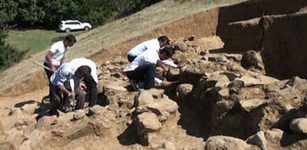 New Findings In Ancient Palidli Necropolis, Agdam Azerbaijan
Civilizations | Sep 24, 2015
New Findings In Ancient Palidli Necropolis, Agdam Azerbaijan
Civilizations | Sep 24, 2015 -
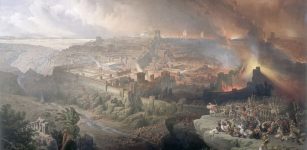 On This Day In History: Siege of Jerusalem: Titus And His Legions Breach The Middle Wall Of The City – On June 5, 70 CE
News | Jun 5, 2016
On This Day In History: Siege of Jerusalem: Titus And His Legions Breach The Middle Wall Of The City – On June 5, 70 CE
News | Jun 5, 2016 -
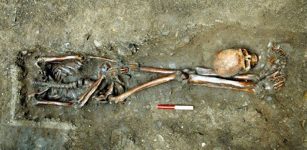 Secrets Of Ancient Skeletons Found In York – Who Were They And Where Did They Come From?
Archaeology | Jan 20, 2016
Secrets Of Ancient Skeletons Found In York – Who Were They And Where Did They Come From?
Archaeology | Jan 20, 2016 -
 Shakespeare ‘Borrowed’ Phrases From Little-Known Manuscript – Study Reveals
News | Mar 9, 2018
Shakespeare ‘Borrowed’ Phrases From Little-Known Manuscript – Study Reveals
News | Mar 9, 2018 -
 Why Was The Pineapple A Status Symbol Once?
Ancient History Facts | Feb 12, 2024
Why Was The Pineapple A Status Symbol Once?
Ancient History Facts | Feb 12, 2024 -
 Mysterious Green Light And Ancient Treasures – Cave Of The Gods And Its Secrets
Featured Stories | Jul 3, 2018
Mysterious Green Light And Ancient Treasures – Cave Of The Gods And Its Secrets
Featured Stories | Jul 3, 2018 -
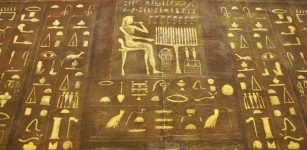 Decipher Hieroglyphs And Ancient Egyptian Images With Google’s AI Fabricius
Linguistic Discoveries | Jul 22, 2020
Decipher Hieroglyphs And Ancient Egyptian Images With Google’s AI Fabricius
Linguistic Discoveries | Jul 22, 2020 -
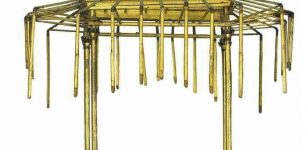 Was Tutankhamun’s Chariot Equipped With Its Own Sunshade?
Archaeology | Jun 27, 2019
Was Tutankhamun’s Chariot Equipped With Its Own Sunshade?
Archaeology | Jun 27, 2019 -
 Discovery At Fujiwarakyu Palace Complex Offers Better Glimpse Of 7th-Century Japan
Archaeology | Oct 21, 2015
Discovery At Fujiwarakyu Palace Complex Offers Better Glimpse Of 7th-Century Japan
Archaeology | Oct 21, 2015 -
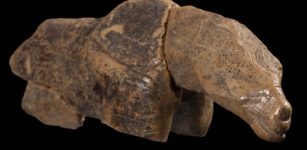 Curious Ice Age Figurine Of Unidentified Animal Species Puzzles Scientists
Archaeology | Jul 31, 2023
Curious Ice Age Figurine Of Unidentified Animal Species Puzzles Scientists
Archaeology | Jul 31, 2023 -
 Unexplained Cases Of Holographic Projections In Ancient And Modern Times
Featured Stories | Sep 14, 2018
Unexplained Cases Of Holographic Projections In Ancient And Modern Times
Featured Stories | Sep 14, 2018 -
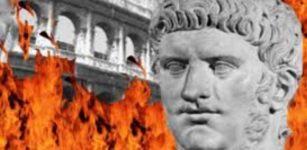 On This Day In History: Most Notorious Roman Emperor Nero Committed Suicide – On June 9, 68 AD
News | Jun 9, 2016
On This Day In History: Most Notorious Roman Emperor Nero Committed Suicide – On June 9, 68 AD
News | Jun 9, 2016 -
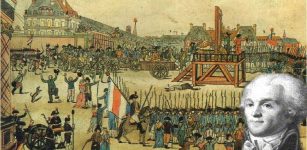 On This Day In History: Maximilien Robespierre Sent To The Guillotine – On July 28, 1794
News | Jul 28, 2016
On This Day In History: Maximilien Robespierre Sent To The Guillotine – On July 28, 1794
News | Jul 28, 2016 -
 Two 1,800-Year-Old Sarcophagi Of Wealthy People Accidentally Found At Ramat Gan Safari Park
Archaeology | Feb 22, 2021
Two 1,800-Year-Old Sarcophagi Of Wealthy People Accidentally Found At Ramat Gan Safari Park
Archaeology | Feb 22, 2021 -
 Magnificent Ancient Egyptian Gold And Soapstone Jewelry Discovered At Tell El-Amarna Necropolis
Archaeology | Dec 18, 2022
Magnificent Ancient Egyptian Gold And Soapstone Jewelry Discovered At Tell El-Amarna Necropolis
Archaeology | Dec 18, 2022 -
 Fossils Of Mysterious Homo Naledi Change Our Understanding Of Evolution
Archaeology | May 10, 2017
Fossils Of Mysterious Homo Naledi Change Our Understanding Of Evolution
Archaeology | May 10, 2017 -
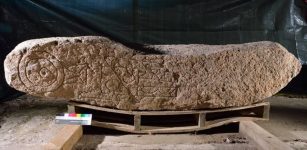 Dandaleith Stone: Scotland’s Rare Symbol Stone Of The Picts – Will It Be Deciphered Now?
Ancient Symbols | Jan 21, 2016
Dandaleith Stone: Scotland’s Rare Symbol Stone Of The Picts – Will It Be Deciphered Now?
Ancient Symbols | Jan 21, 2016 -
 Jade Emperor – Supreme Ruler Of Heaven In Chinese Mythology
Chinese Mythology | Feb 21, 2019
Jade Emperor – Supreme Ruler Of Heaven In Chinese Mythology
Chinese Mythology | Feb 21, 2019 -
 Kanishka Casket – Beautiful Ancient Buddhist Treasure In Gilded Copper
Featured Stories | Jun 14, 2021
Kanishka Casket – Beautiful Ancient Buddhist Treasure In Gilded Copper
Featured Stories | Jun 14, 2021

